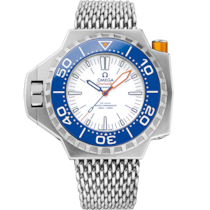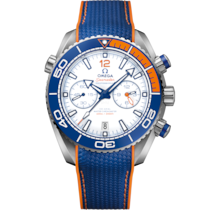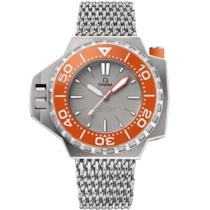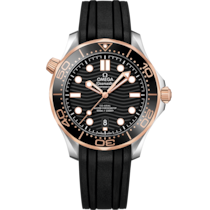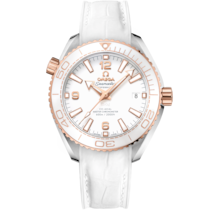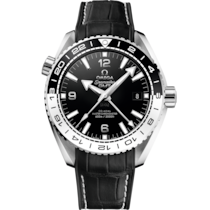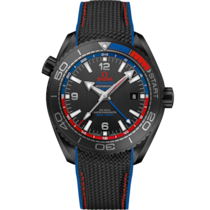For adding colour and sparkle, there’s also Omega Ceragold™, a process which took years to master. Ceragold™ is a watch designer’s dream, as it allows for the bonding of 18K gold and ceramic. Again, there’s no racing to the finish. Achieving perfect results takes time and careful handling. In hospital-clean conditions, the laser engraved bezels undergo an electroforming process, which involves creating a conductive layer and then submerging them in a gold electrolytic bath for 48 hours, which leaves a thick coating of 18K gold. The excess gold is then removed to reveal the original ceramic surface, leaving a solid gold layer in the scale which is not only smooth to touch, but offers a dramatic and luxurious contrast between the case material and the scale.
When it comes to creating bold intervals of colour, such as the striking slice of orange highlighting the first 15 minutes on Omega’s Seamaster Planet Ocean, the brand’s go-to hardware is rubber. Rubber could hardly be described as cutting-edge but when this humble material is (literally) pressed into service using a rubber injecting or vulcanising process, it nonetheless produces striking results. Further proof of this can be found on commemorative watches, such as Omega’s America’s Cup Seamaster Planet Ocean, which uses the red and blue of the New Zealand flag.
Of course, bright colours are not always the best option when trying to make a bold statement. Often, it’s a striking contrast that catches the eye. Omega’s evenly divided black and white bezels are produced by dual injecting ceramic to create the desired night/day effect. Should a design call for a white that’s dazzlingly white, Omega employs enamel. A soft powder fired into a material so resilient, it won’t fade over time.
Ceramic is a tough customer. By comparison, stainless steel is a breeze to work with. But as the accompanying photographs prove: all that hard work produces watches that are extremely easy on the eye.

